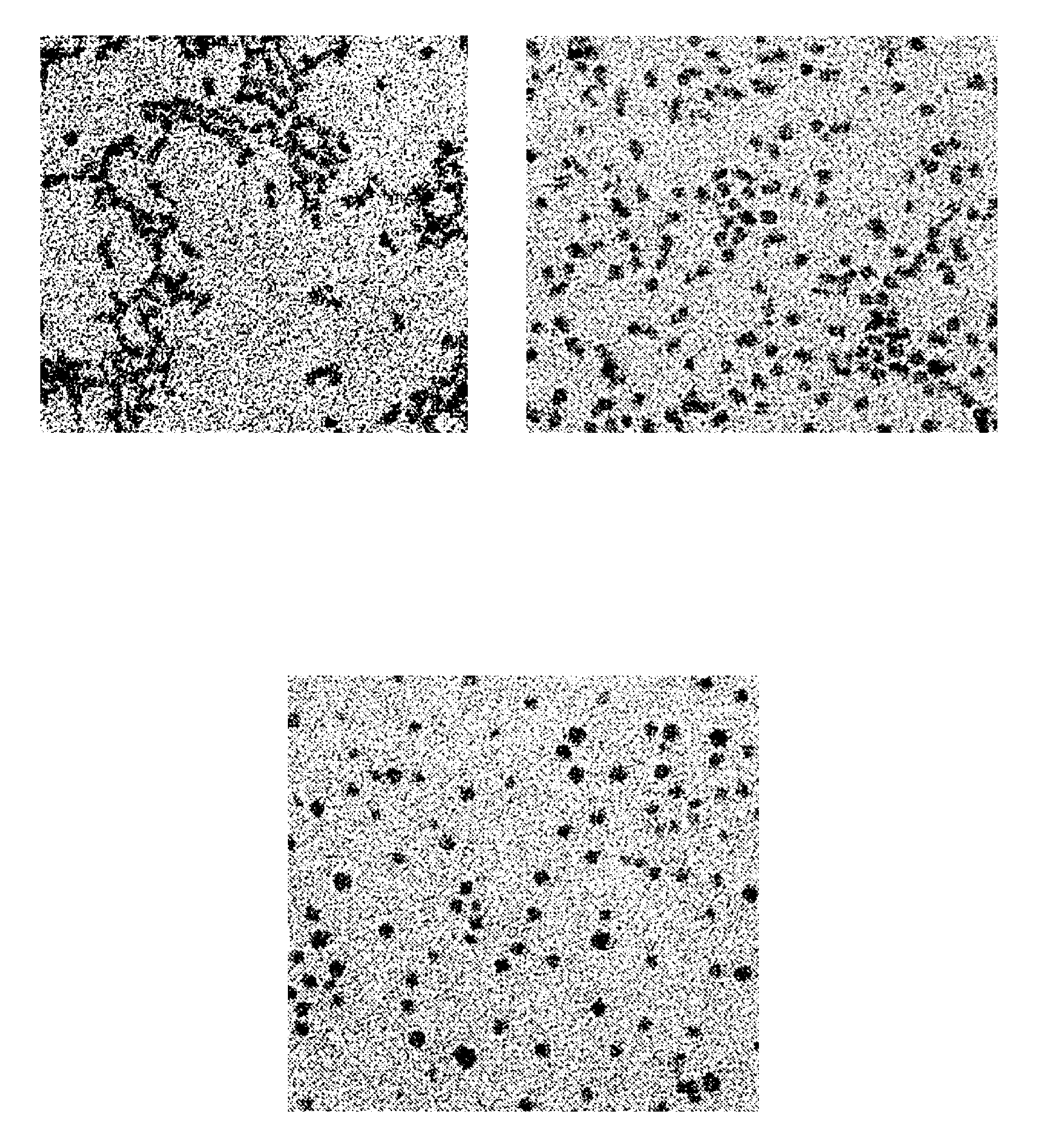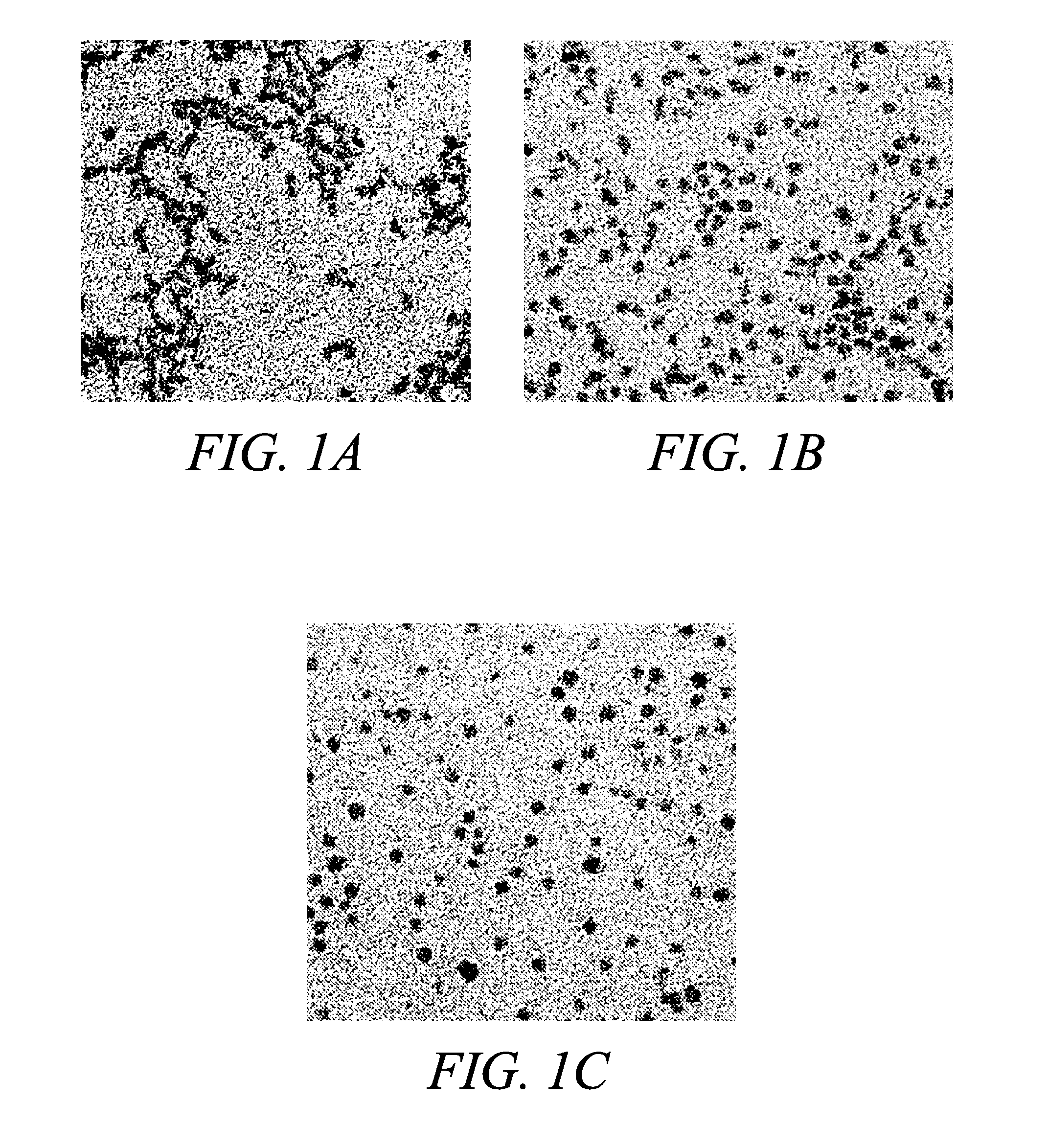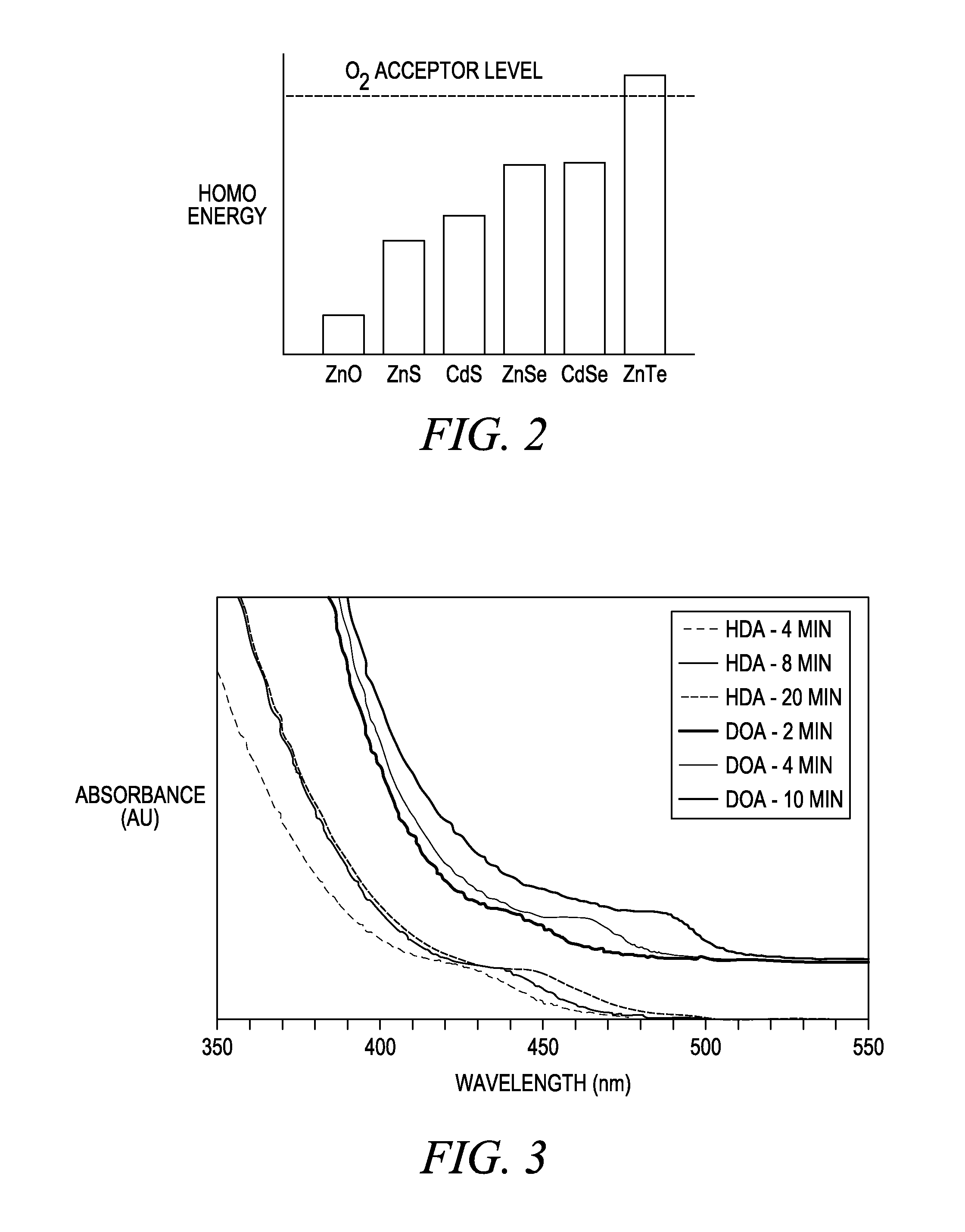METHODS FOR PREPARATION OF ZnTe NANOCRYSTALS
a technology of znte nanocrystals and compositions, applied in the field of semiconductor nanocrystal compositions, can solve the problems of complete destruction of the luminescence of nanocrystal cores, lack of insufficient intensity or stable emission intensities of nanocrystal cores alone, and insufficient light intensity of nanocrystal cores, etc., to achieve good photochemical and chemical stability
- Summary
- Abstract
- Description
- Claims
- Application Information
AI Technical Summary
Benefits of technology
Problems solved by technology
Method used
Image
Examples
example 1
Preparation of Znte Core Nanocrystals
[0125]This example describes an exemplary method for making ZnTe nanocrystals of the invention. Dioctylamine is rigorously dried as described herein, and is used as the solvent for ZnTe nanocrystal core formation Zinc oleate is added, followed by tellurium in TOP, which is referred to as TOPTe. This is heated at about 290° C. with a very small amount of lithium triethylborohydride, sufficient to provide a desired amount of nucleation. Heating is continued until the absorbance maximum for the ZnTe nanocrystals reached the desired wavelength (color), e.g., about 425 nm to about 540 nm. The cores can be isolated by conventional methods.
example 2
Addition of ZnSe Shell to ZnTe Cores
[0126]The ZnTe cores are treated as follows to grow a ZnSe shell on the core. ZnTe cores are dispersed in dioctylamine, which has been rigorously dried as described herein. Zn(oleate)Cl (0.3 equiv.) is added, and the mixture is heated to about 300° C. TOPSe and Zn(oleate)Cl (about 1 equivalent) is then added, and heating is continued until the desired fluorescent wavelength is reached, indicating that the nanocrystals have reached a desired size. Nanocrystals having a fluorescence maximum between about 525 nm and about 560 nm can be produced, depending upon the size of the ZnTe core and the thickness of the ZnSe shell. The core / shell nanocrystals are isolated by conventional methods.
example 3
Addition of ZnS Shell to ZnTe / ZnSe Core / Shells
[0127]ZnTe cores with a ZnSe shell were dispersed in dried dioctylamine. Zn(oleate)Cl (0.3 equiv) was added and the mixture was heated to about 250° C. Zn(oleate)Cl and sulfur-oleylamine (about 1 equivalent) were added gradually over the course of 1-3 hours until a desired shell thickness has been added. The mixture was cooled and the nanocrystals were isolated by conventional methods.
PUM
| Property | Measurement | Unit |
|---|---|---|
| size | aaaaa | aaaaa |
| diameter | aaaaa | aaaaa |
| diameter | aaaaa | aaaaa |
Abstract
Description
Claims
Application Information
 Login to View More
Login to View More - R&D
- Intellectual Property
- Life Sciences
- Materials
- Tech Scout
- Unparalleled Data Quality
- Higher Quality Content
- 60% Fewer Hallucinations
Browse by: Latest US Patents, China's latest patents, Technical Efficacy Thesaurus, Application Domain, Technology Topic, Popular Technical Reports.
© 2025 PatSnap. All rights reserved.Legal|Privacy policy|Modern Slavery Act Transparency Statement|Sitemap|About US| Contact US: help@patsnap.com



